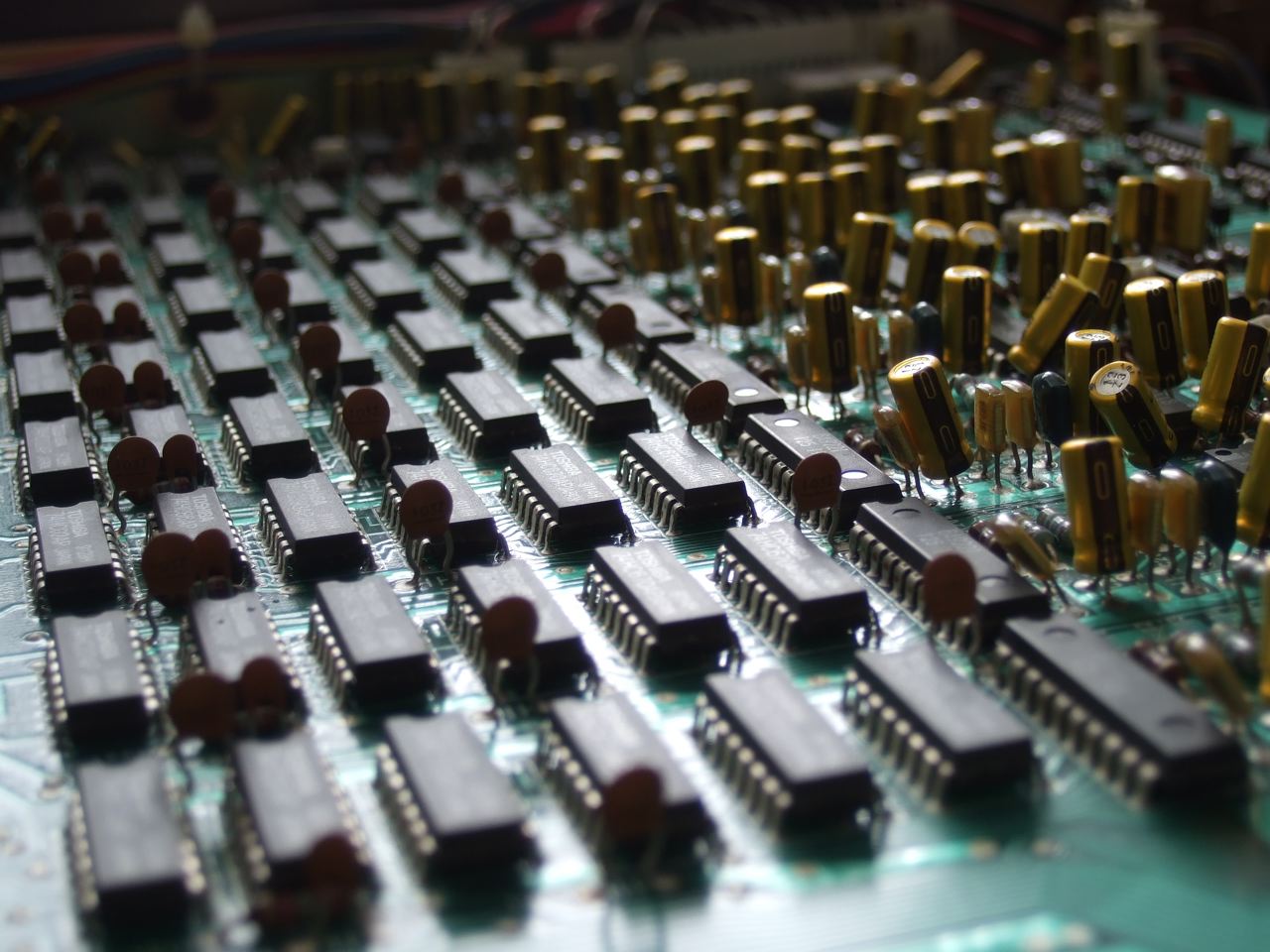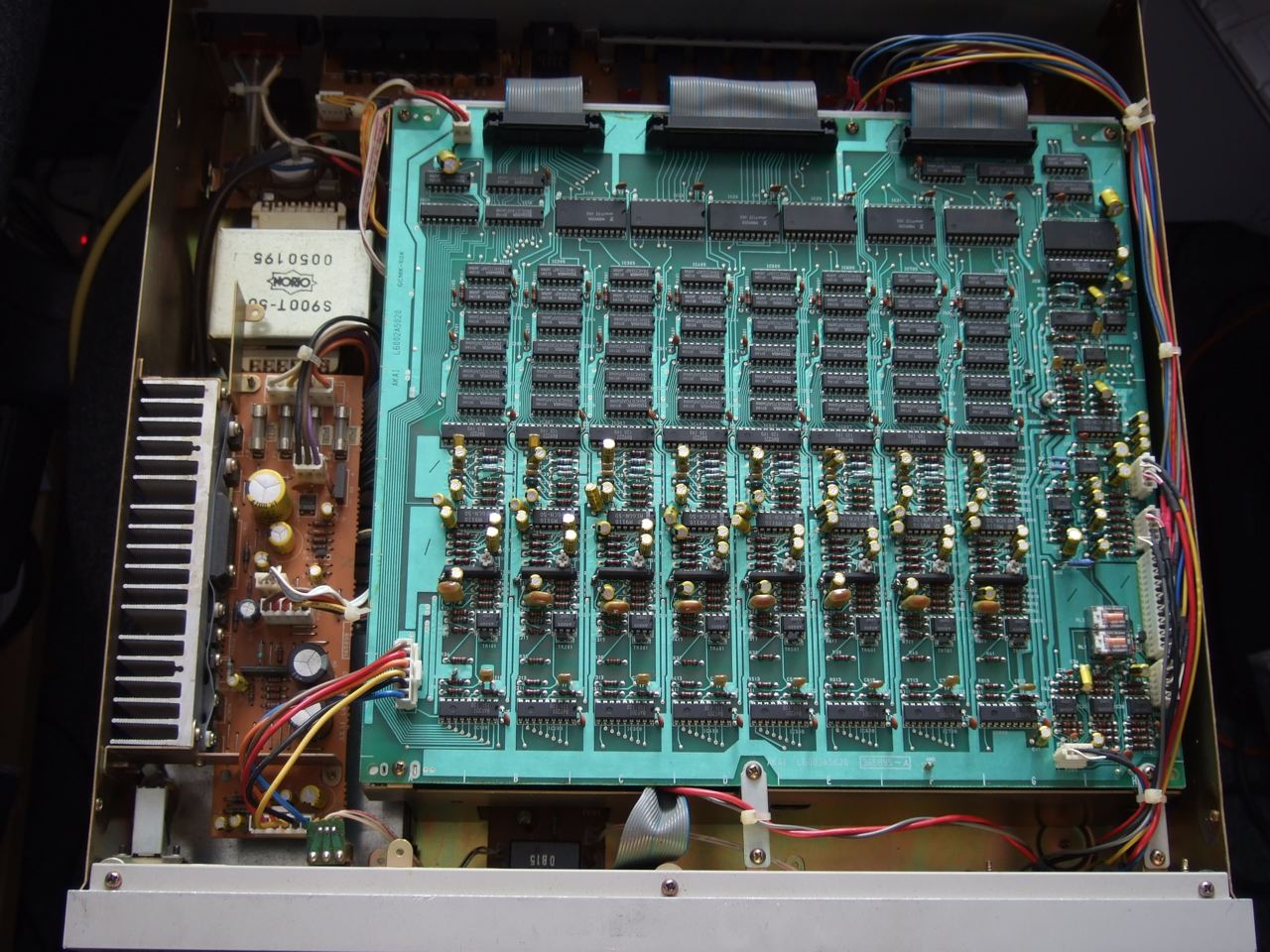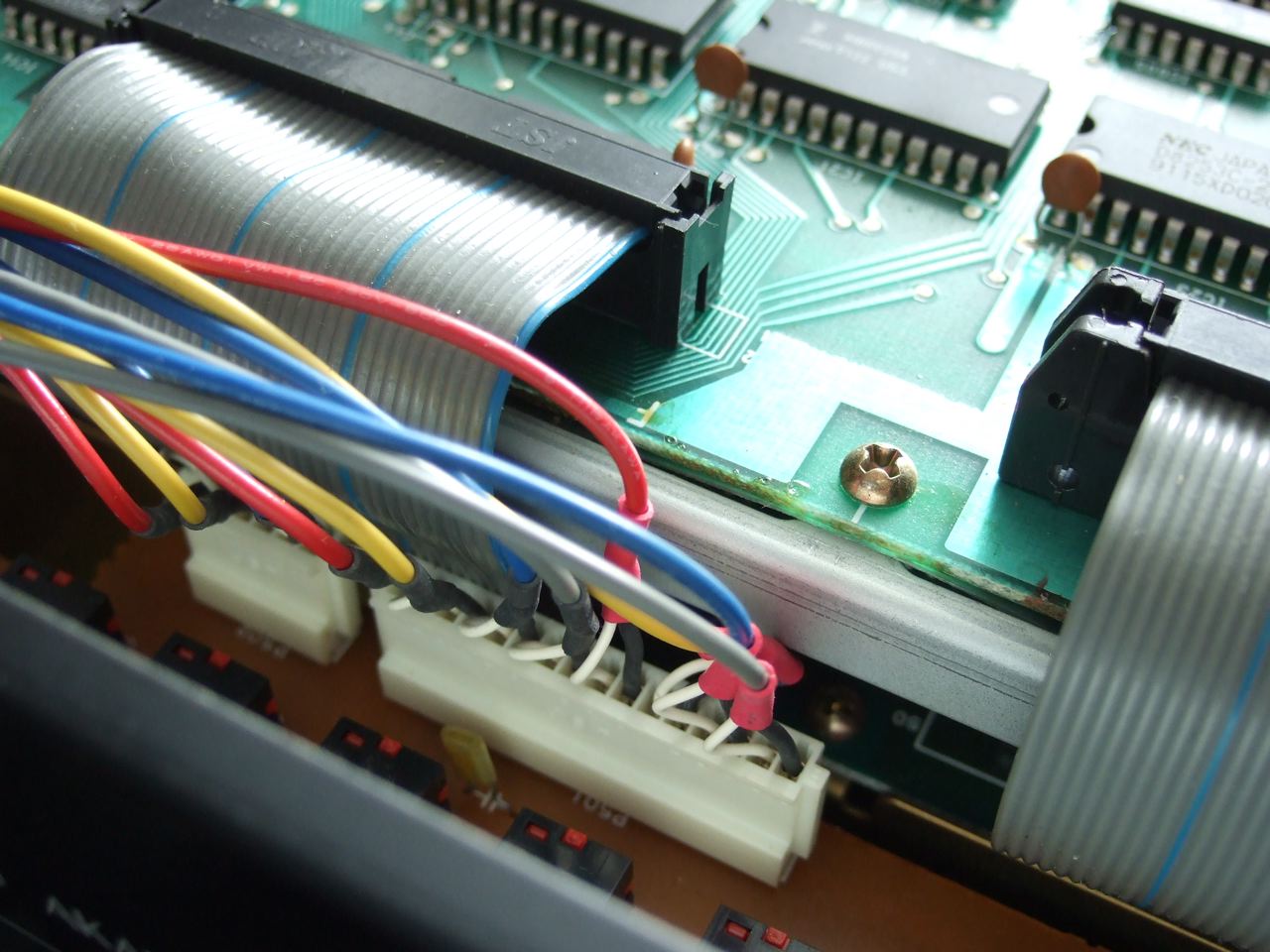s950 screen replacement
Saturday afternoon, got a couple of hours, let’s change the screen in my S950.
Here’s the problem – backlight really dim in the late afternoon light. Even with the curtains drawn it’s hard to get a photo with the reflections. If anything this makes it look more readable than it was.

Let’s take it to bits.

I’m using the (slightly confusing) instructions from the Gearslutz Pimp my S950 thread. I bought a 40×2 display from buydisplay via Ebay – this is the one:

The original screen has a 14-pin data/power connection on the left-hand side, and the backlight power connection on the right-hand side here:

I was just interested to see what kind of voltage was appearing here, but it was hard to measure – didn’t seem to be getting anything much, maybe half-a-volt? Partly I suspected that screen is probably fine, but the inverter is stuffed – here it is, lurking in-place behind the front panel:

The connection on the left is the 5V and 0V connection from the panel – this is what we’ll use to provide the power for the backlight on the new display. The data and power connection for the display uses the bottom 14 pins on the connection, with the 15th and 16th pin taking 5V and ground respectively for the backlight.
As Don suggested in the thread, I connected a 1K pot (albeit linear, it’s all I had going spare) in series with the 5V connection to control the backlight – I nudged it down a bit from the maximum, and it’s probably a bit too bright still but it’s readable.
It took a bit of finagling to get the screen in place – it has to go behind the screw holes because the screen is thicker than the old one. The screws had to go in from the back, which was a bit of a faff.

Here it is with the front panel on:

Looking loads better. Shame about the scratch through the screen, though not much I can do about that. It was only 75 quid when I bought it (including a massive box of discs) so I can’t complain really.
While I had it open I took some photos of the insides. Easy to see the eight voices on the top board.

Getting a bit closer – loads of regulators attached to that chunky heatsink:

Towards the back on the left we’ve got the power inlet, transformer and the MIDI board – PC900V opto represent.

And there’s this bit, caused me some trouble last time.

It’s all back together now and happily propping up a bunch of other relics.






